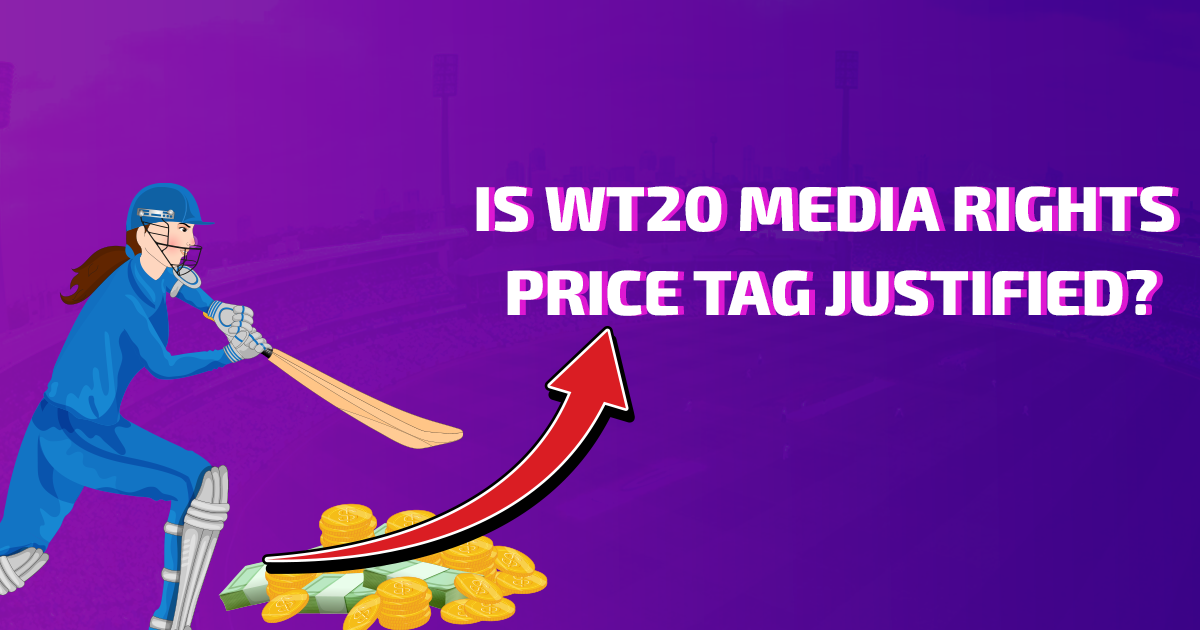The Women’s T20 League may have taken its time but finally, it is presented to us. Even before the first ball was bowled or hit it has been deemed a hit being the second-richest franchise-based cricket league in the world across gender and it speaks volumes of the potential of the game. According to Jay Shah, it is the third richest franchise-based women’s league across the world after WNBA.
It was Viacom-18 Media who bagged the media rights for the first five seasons of the WT20 league. It did leave a heavy dent of INR 951 crore in their pocket thus taking the per-match value of the newly formed women’s T20 league to INR 7.9 crore. Moreover, only five teams were bought for a cumulative price tag of INR 4,666.99 crore, staggering figures with Gujarat Giant with the highest-priced one at INR1,289 crores.
The auction for the Women’s team also saw big money spent on big-name players, with each team having a purse of Rs.12 crore to spend. S.Mandhana was the first and most expensive of the lot at INR 3.4 crore to RCB. Australian all-rounder A. Gardner was the most-priced overseas player for INR 3.2 crore. When compared to that of the Men’s inaugural season of an auction, M.S Dhoni INR 9.5 crore is steep but considering this was the first one the price will only rise in the future.
Is this idea of the Women’s T20 League fruitful for the stakeholders?
Ideally, it is a win-win situation for all the stakeholders involved. With the price tag attached to the league and with the successful auctions the signs are indeed looking positive. Moreover, it is the players who will be rather well-equipped and rewarded for their talent and passion for the game, a phenomenon that was not yet made into a reality. The earning potential of the league itself is promising for the players which in turn will further fuel the league to reach greater heights.
But the question remains, what’s in it for the brands who have invested a huge amount in what is a very new project. For brands, gender equality in sports will be the focus, just as the number of male cricketing personalities has increased due to such T20 leagues, a similar prospect is expected with the Women’s T20 League. Moreover, with female spectators consuming this sports, products such as fashion, beauty, and care find will then be targeted thus making it a broader market. This will bring inclusive diversity to the game as well as the cricket community.
The main action however will be the terms of the TV and digital telecasting. Both of them are key mechanisms in covering the event and at the same time promoting it. Digital media will focus on reaching the young audience and engaging them using the social media, at the same that TV broadcasts will provide the much-needed traditional value the league is hoping for. However, the viewership of women’s cricket is just a small fraction of that of men’s cricket, the ad rates will be lower. This again will depend on how the masses consume the league in its first viewing. A popularity surge of the players, exciting matches, and a well-planned tournament may push the limits of the ad rates and change them for the good.
Perhaps an ICC Tournament win for the Indian National Women’s team just prior to this league would have been an optimal position for its inception. But as of now, the option is very limited and BCCI are putting all their eggs in one basket. With all the hype and anticipation the Women’s T20 League has been garnering as of now, it would be a sucker punch if it does not live up to its expectations.
![]()

